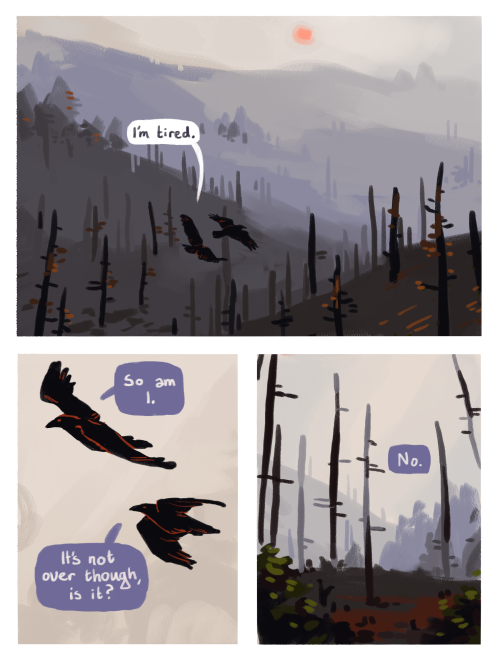Reasons.



reasons.
More Posts from Shamrockskullscarabs and Others
“Superstition is a part of the very being of humanity; and when we fancy that we are banishing it altogether, it takes refuge in the strangest nooks and corners, and then suddenly comes forth again, as soon as it believes itself at all safe.”
— Johann Wolfgang von Goethe, Maxims and Reflections
A physicist, a mathematician, and an engineer are all found guilty of treason and sentenced to death by guillotine.
The priest reads them their last rites, then the king orders the executioner to kill the physicist.
The executioner offers the physicist two choices: would he like a hood on or off, and would he like to be executed face up or face down. The physicist replies, “I spent my whole life studying the heavens. I would like to face the sky, with the hood on like night!”
The executioner positions the physicist and drops the blade… … and it stops inches from the physicists’ neck.
The priest cries, “It’s a sign from God! This man is innocent! Set him free!”, so the king pardons him, and orders the mathematician executed next.
The executioner offers the mathematician the same choices: would he like a hood on or off, and would he like to be executed face up or face down. The mathematician replies, “They all result in an equivalent state, but hood off face down is the most elegant solution!”
The executioner positions the mathematician and drops the blade… … and it stops inches from the mathematician’s neck.
The priest cries, “It’s a sign from God! This man is innocent! Set him free!”, so the king pardons him, and orders the engineer executed next.
The executioner offers the engineer the same choices: would he like a hood on or off, and would he like to be executed face up or face down. The engineer replies, “I have always loved machines, and there is no more elegant a killing machine than the guillotine. I will spend my final moments marveling in its beauty!”
The executioner positions the engineer and, as he’s about to drop the blade, the engineer shouts:
“I see the problem!”
Enrique of Malacca
Circumnavigating the world is no easy feat, especially when the world’s geography was so uncertain in the past. And while the world celebrates Magellan’s effort and success, Malaysians take pride in its success in honour of an entirely different person, known simply as Enrique of Malacca or Henry the Black.

Statue of Enrique in the Maritime Museum of Malacca, Malacca City, Malaysia. Photo obtained from Wikipedia.
A voyager of Malay descent, Enrique met Magellan when the Portuguese conquered Malacca in 1511, putting Enrique under Magellan’s workforce as his slave. In 1519, Enrique was enlisted in Magellan’s fleet to set sail around the Earth primarily due to his ability to speak the Malay language (which was the lingua franca of the region at the time). He accompanied Magellan throughout the expedition until the Battle of Mactan and Magellan’s death, after which he left the Magellan expedition on 1st May 1521 with the presumed intention of heading back to his homeland.

The route taken by the Magellan expedition, with milestones highlighted. From Cebu, had Enrique returned back to his home in Malacca, he would have been the first person to circumnavigate the Earth. Photo obtained from Wikipedia
Though there are no concrete records of Enrique after he left the expedition, there lies the possibility that he may have been the first person to circumnavigate the globe instead of the Magellan expedition. In order to claim the title, Enrique would have to reach his homeland which is considered HIS starting point instead of going back to Spain before September 1522, which is when the Magellan expedition entered Spain through Sanlúcar de Barrameda, their starting point when they first started the journey. However, as no record ever made light of this matter, it is currently unknown whether Enrique ever did make his way back to his homeland or lost his way somewhere.

Cebu island in the Philippines. The last place where Enrique was recorded alive after he left the Magellan expedition. Photo from Wikipedia.
While the truth of Enrique’s fate may present itself in the future, it is still a national pride that a native of Malaysia from Malacca managed to be a part of one of the most historical maritime expeditions of the early 1500s.



The Argent
A Ghoster mini-comic.
Read online
Le Manoir du Diable (1896)
Considered the earliest horror film ever made, Le Manoir du Diable, French for House of the Devil, is an 1896 silent film by George Méliès about two wandering cavaliers and how the Devil played tricks on them.
Far from being terror-inducing, the entire 3-minute short film (quite ambitious at the time) was actually a comic sketch meant to evoke laughter and amusement from its audience, rather than fear. It was presumed lost until the late 1980s when a copy was found again and restored by the New Zealand Film Archives.
-
 lindywitch reblogged this · 4 days ago
lindywitch reblogged this · 4 days ago -
 icecooob64 liked this · 4 days ago
icecooob64 liked this · 4 days ago -
 birchshutter reblogged this · 4 days ago
birchshutter reblogged this · 4 days ago -
 smollsmule reblogged this · 5 days ago
smollsmule reblogged this · 5 days ago -
 expertexpectedexception liked this · 5 days ago
expertexpectedexception liked this · 5 days ago -
 expertexpectedexception reblogged this · 5 days ago
expertexpectedexception reblogged this · 5 days ago -
 goddamnitallthenamesaretaken liked this · 5 days ago
goddamnitallthenamesaretaken liked this · 5 days ago -
 goddamnitallthenamesaretaken reblogged this · 5 days ago
goddamnitallthenamesaretaken reblogged this · 5 days ago -
 efrahimhatesu liked this · 5 days ago
efrahimhatesu liked this · 5 days ago -
 hbb03 liked this · 6 days ago
hbb03 liked this · 6 days ago -
 fuchsiafiasco reblogged this · 6 days ago
fuchsiafiasco reblogged this · 6 days ago -
 kainamite15 reblogged this · 6 days ago
kainamite15 reblogged this · 6 days ago -
 enbyblades liked this · 6 days ago
enbyblades liked this · 6 days ago -
 retaliatesfirst reblogged this · 6 days ago
retaliatesfirst reblogged this · 6 days ago -
 alpacanembassy liked this · 6 days ago
alpacanembassy liked this · 6 days ago -
 kaleidocalico liked this · 6 days ago
kaleidocalico liked this · 6 days ago -
 nerobearo liked this · 6 days ago
nerobearo liked this · 6 days ago -
 faeriefireinyoureyes reblogged this · 1 week ago
faeriefireinyoureyes reblogged this · 1 week ago -
 woahderbud liked this · 1 week ago
woahderbud liked this · 1 week ago -
 second-doctors-wig liked this · 1 week ago
second-doctors-wig liked this · 1 week ago -
 caffeinatedpigeon reblogged this · 1 week ago
caffeinatedpigeon reblogged this · 1 week ago -
 faggylittlenuisance reblogged this · 1 week ago
faggylittlenuisance reblogged this · 1 week ago -
 ametrinember reblogged this · 1 week ago
ametrinember reblogged this · 1 week ago -
 cheemdream liked this · 1 week ago
cheemdream liked this · 1 week ago -
 thetreehuggerhugger reblogged this · 1 week ago
thetreehuggerhugger reblogged this · 1 week ago -
 thetreehuggerhugger liked this · 1 week ago
thetreehuggerhugger liked this · 1 week ago -
 oldable liked this · 1 week ago
oldable liked this · 1 week ago -
 septimusrecks reblogged this · 1 week ago
septimusrecks reblogged this · 1 week ago -
 septimusrecks liked this · 1 week ago
septimusrecks liked this · 1 week ago -
 browsingforspaceships reblogged this · 1 week ago
browsingforspaceships reblogged this · 1 week ago -
 wolfstar4466 reblogged this · 1 week ago
wolfstar4466 reblogged this · 1 week ago -
 wolfstar4466 liked this · 1 week ago
wolfstar4466 liked this · 1 week ago -
 kaijuandcoffee reblogged this · 1 week ago
kaijuandcoffee reblogged this · 1 week ago -
 litners-lending-library reblogged this · 1 week ago
litners-lending-library reblogged this · 1 week ago -
 silberpilz liked this · 1 week ago
silberpilz liked this · 1 week ago -
 draiad liked this · 1 week ago
draiad liked this · 1 week ago -
 barafishtiddies reblogged this · 1 week ago
barafishtiddies reblogged this · 1 week ago -
 jayninereturns reblogged this · 1 week ago
jayninereturns reblogged this · 1 week ago -
 erincorvus reblogged this · 1 week ago
erincorvus reblogged this · 1 week ago -
 four-bladed-fan liked this · 1 week ago
four-bladed-fan liked this · 1 week ago -
 inkedscribbles reblogged this · 1 week ago
inkedscribbles reblogged this · 1 week ago -
 decrescendo reblogged this · 1 week ago
decrescendo reblogged this · 1 week ago -
 insanelyadd liked this · 1 week ago
insanelyadd liked this · 1 week ago -
 deaderrose reblogged this · 1 week ago
deaderrose reblogged this · 1 week ago -
 os-anastigmat-anaesthesia-why liked this · 1 week ago
os-anastigmat-anaesthesia-why liked this · 1 week ago -
 autisticpuppy28 liked this · 1 week ago
autisticpuppy28 liked this · 1 week ago -
 occultistmave liked this · 1 week ago
occultistmave liked this · 1 week ago -
 magswires liked this · 1 week ago
magswires liked this · 1 week ago

55 posts
